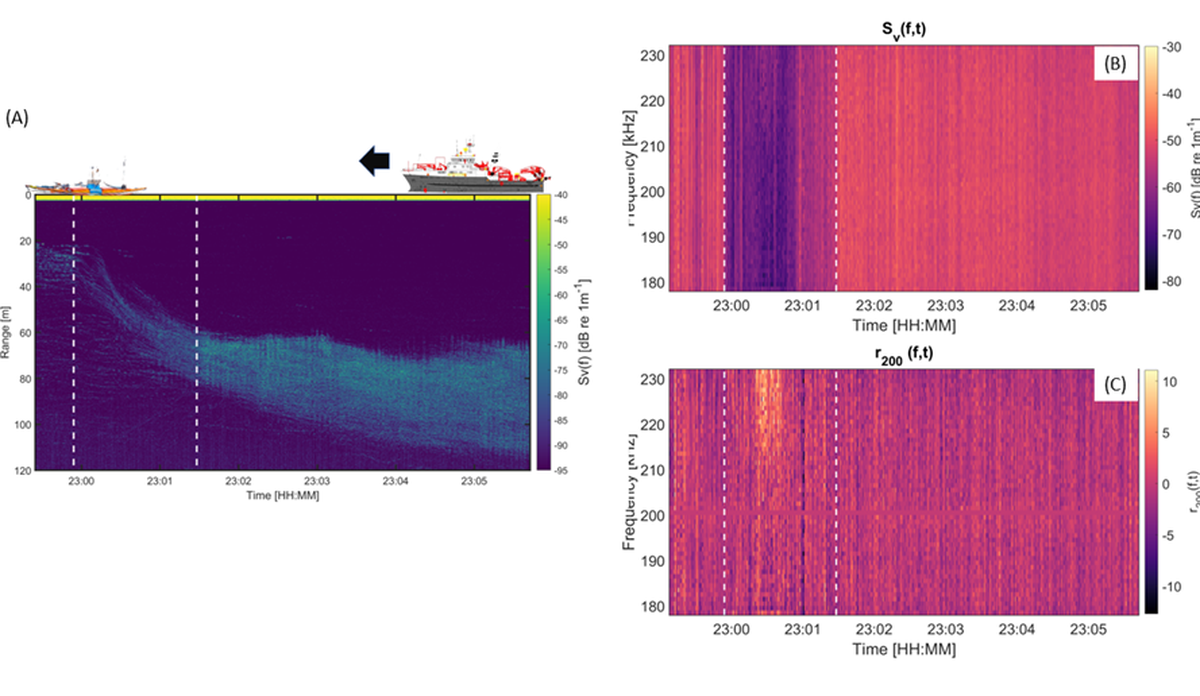
New scientific paper: "Broadband backscattering by Atlantic herring (Clupea harengus L.) differs when measured from a research vessel vs. a silent uncrewed surface vehicle" (open access)
But how is the broadband response (the echo) of herring affected when it reacts to a research vessel? And does this behavior have consequences for how we train and use models to recognize herring? This is what we investigated in a new article published in the ICES Journal of Marine Science.
In the paper, we used two different platforms equipped with broadband echo sounders (Kongsberg Discovery EK80). We examined the broadband response from herring using both a traditional research vessel (GO Sars) and a silent, unmanned surface vehicle (HIs "Kayakdrone"). We observed that the herring reacted, and dived, when the traditional research vessel approached, while it did not react to the silent and much smaller Kayakdrone. The broadband response we observed from the vessel and the Kayakdrone was different, which means that we must take into account the platform we use to collect data when implementing automatic classification..
The paper is one of nine scientific papers published in the ICES Journal of Marine Science from the symposium "From Echosounders to the Cloud: Transforming Acoustic Data to Information", and the entire aper can be read for free on the journal's website:
Pedersen, G., Johnsen, E., Khodabandeloo, B., and Handegard, N. O. 2024. Broadband backscattering by Atlantic herring (Clupea harengus L.) differs when measured from a research vessel vs. a silent uncrewed surface vehicle. ICES Journal of Marine Science: fsae048.